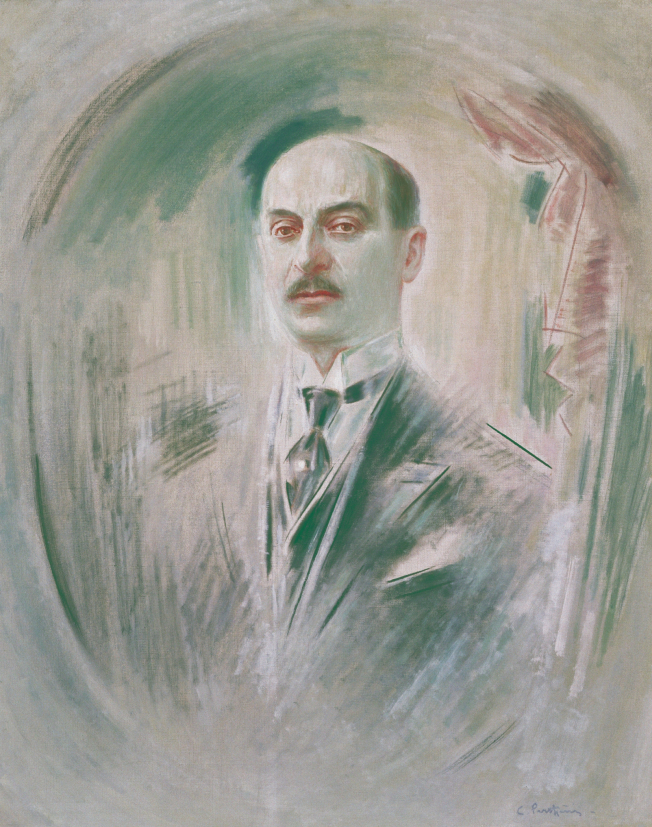Portrait of George M. Averoff


Constantinos Parthenis was the leading Greek painter who went along, in the early twentieth century, with the pioneers of European art. Nature in Greece, the Greek world, the wealth of tradition are given expression in his work through the approach of the modern movements which he came to know both in Vienna, during the course of his studies there, and in Paris, the destination of the artists who introduced the spirit of renewal into Greece. A Greek of the Diaspora, nurtured by the culture of his birthplace, Alexandria, and by nature eccentric, with spiritual quests of his own, it was natural for him to choose as his place of study the country where he could fulfil his expectations. At the age of 16 he was in Vienna, in the neo-Romantic, idealistic, allegorical atmosphere of the age, where the New Style (Jugendstil), the 'new art', with the symbolic-mystical tendency which was typical of it, gave new meaning to the line and to colour, which were no longer associated with the 'descriptive', the 'analytic', the 'anecdotal' of objective depiction, but with the content, the 'idea', the 'symbol'. The Viennese influence of the early twentieth century was gradually displaced by the synthetic formations of French symbolism and of Pierre Puvis de Chavannes, with their Hellenising and tectonic compositions, but, above all, by the painting of the Nabi, and particularly of Maurice Denis. His subject-matter, from being allegorical, symbolic or religious, became more intellectual, spiritual, and, above all, Hellenocentric. Influences from antiquity and Byzantium, in a harmonious co-existence, project a Greece which is utopian and idealised, in a brilliant 'pantheon', which is rendered in an idealistic, anti-realistic spirit, expressed through stylisations, anti-naturalistic colour, an inclination to decorativeness, and the shaping of the space by planes - all features of the post-Impressionist movements which Parthenis took to heart.

